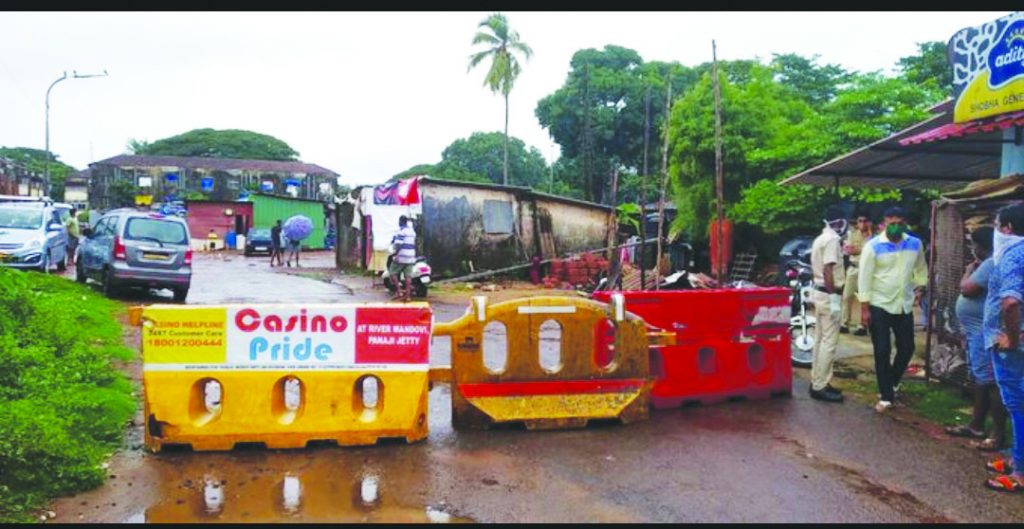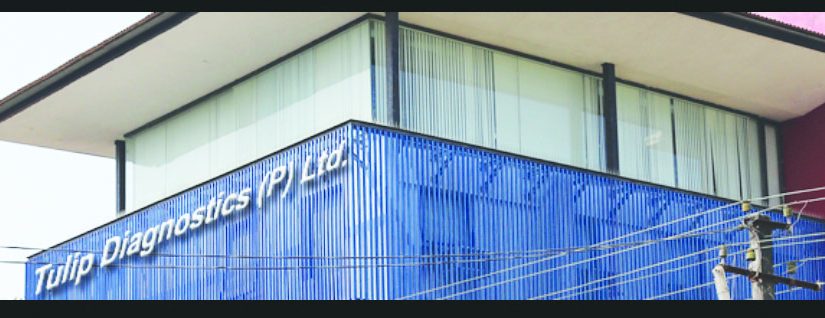LIVELIHOOD: The jobs of the 400 employees of Tulip Diagnostics located at the Verna Industrial Estate are at stake, as so far 80 of them have tested positive for Covid-19. It is not known what will be the final count as test results of the remaining employees have not being revealed yet
By Tamanna
In one industrial unit Tulip Diagnostics in the Verna Industrial Estate alone 80 employees tested positive for Covid-19. The sweepers and drivers working for CCP are jobless as they have not been allowed to resume work because of a new Covid-19 case. In Aurangabad there are reports that thousands of daily wage employees of the Bajaj factory may lose their jobs as some of them have been infected…..
The COVID-19 pandemic hit manufacturers in an unprecedented and unexpected way. It is the first time in contemporary manufacturing records that demand, supply, and workforce availability have influenced by this pandemic globally at the same time.
The ongoing lockdown has put a lot of pressure on the manufacturing industry to increase their sales, which contributes almost 20% of the GDP. Of this, 50% is contributed by the automotive industry. Thus, the automotive industry plays a vital role in the growth of the economy. But the coronavirus has shaken this auto industry very badly.
The Manufacturing Industry has been hitting in many ways due to the Corona effect!
The manufacturing industries play a crucial role in economic development because it provides jobs to many people but the pandemic has shaken this industry.
Due to lockdown, bike, scooter, and car manufacturers had to Shut down their factories for weeks. Their workforce which is mostly migrants went back to their homes due to not having any work as factories had to closed in this pandemic.
Every major manufacturer is now experiencing break-down due to their supply chains of parts and raw materials, driven by what may now become recurring volatility of supply from South Asia.
The workforce doesn’t want to come back on the work from their places because of the fear that the government might be imposed lockdown again, without informing.
Without the workforce, many manufacturing industries are not able to restart their factories and companies. Millions of daily-wage workers who have left cities are creating a labor shortage.
The abruptness and the pervasiveness of this pandemic have created a storm for manufacturing industries. The bottom has fallen out of market demand globally, while supply chains are being disrupted worldwide. The reason is people have no money to buy any goods or services as everyone has been sitting at home for 3 months and another reason is their businesses are shut down in the lockdown. Whatever the money they have in liquid form, they are spending on buying essential goods. This is the main barrier in front of the manufacturing industries.
To raise demand is the most difficult challenge for manufacturers in post lockdown.

“Production is down by 50% and demand is very weak,” says Kshitij Ghai, who owns a textile mill that produces an acrylic fabric in the northern city of Ludhiana.
The government imposed lockdown suddenly without giving time to people to manage their businesses. Nobody was outfitted for this. With millions of people in completely or partially lockdown, the pandemic has pushed societies to quickly and dramatically change in how we work, communicate, socialize, and consume products and services. Even after the relaxation given by the government, no guidelines were given to manufacturing industries to reopen their factories.
The CEO of one of the world’s leading motorcycle manufacturers said there isn’t enough clarity from the government.
“I am not seeing that smooth, concerted, rhythmic movement towards unlocking,” says Rajiv Bajaj, managing director of Bajaj Auto.
Mr. Bajaj was speaking to India’s opposition leader, Rahul Gandhi. “An aligned approach is required… I am really distressed because it is a herculean task to open up,” he told Mr. Gandhi.
3D printing service- It provides cost-effectiveness with its focus on lean manufacturing. Industries like automotive, defense, healthcare, and aerospace have been early adopters of 3D printing in India.
On June 4, HP has Announced its Expansion of 3D Printing Services. The value of the Digital Manufacturing Network has only augmented over the past few months in the wake of COVID-19.
HP Inc., Palo Alto, Calif., announced that it is adding new materials and expanding its 3D printing services.
“We are continuing with our strategy,” said Ramon Pastor, interim president of HP’s 3D Printing and Digital Manufacturing.
HP has partnerships with leading industrial companies such as Siemens and BASF to accelerate the design and production of 3D printed at scale. The entire 3D printing community has come unitedly to help fight this pandemic.
Internet of Things (IoT)- Internet of things also plays a key role in digital transformation. When the fundamentals IOT technologies are applied to the manufacturing industry, it is called the Industrial Internet of Things (IIoT), and it is a major disruptor. The usage of IoT in manufacturing is on the rise thanks to reducing the costs of hardware and software components including sensors, cloud computing, and analytics tools.
Artificial Intelligence (AI)–Manufacturing plants and factories have to embrace automation to stay relevant in the long run. AI-driven machines add significant value to the manufacturing process as they enable automation of tasks, enhance production efficiency, and bring machine interaction closer to human interaction.
Robotics manufacturing– Robots are designed to collaborate with human workers. Thus, robots can play a vital role in optimizing assembly operations and improving manufacturing production cycles through their accuracy, speed, reach, and any material handling capacity. Robots empower human workers as their implementation allows the labor force to be trained in new skills thereby acquiring a competitive edge in the workforce.
Manufacturers should be looking at refurbishing tools, technologies, and methods that motivate the next generation of workforce, new business models that include technology partnerships, robots, AI and digital infrastructure, 3D printing that supports increased ability and business performance. 3D printing also speeds up product development across verticals. It seems that 3D printing is clearly headed for a bright future.
Is this the opportunity for India to start its own Manufacturing Powerhouse to save the Future of the Manufacturing Industry?
Narendra Modi’s ascent to power in 2014 and the grand launch of the “Make in India” manufacturing initiative was recognized as the coming-of-age of India’s manufacturing potential. The disorder from COVID-19 has offered India the opportunity to reinvent itself as a manufacturing powerhouse. Because China has found itself facing global scrutiny since the pandemic. Due to the epidemic and trade war, no countries like U.S.A want to do any business with China.
Therefore, the government should announce eye-catching schemes to attract companies to manufacture in India’s eastern coast and traditional manufacturing clusters. It is the only way that the government can save the future of Indian manufacturing industries.
Conclusion-If India’s manufacturing economy has to reach $1 trillion by 2025, manufacturing units need to transform into smart manufacturing units. Incorporating these technologies can have a significant impact on efficiency and business. The usage of robots results in improved efficiency, reduced costs, and better production flexibility. GOI should support the manufacturing industry and manufacturers must understand which sections of our social, business, and political environment will grow in the aftermath of the COVID-19 pandemic and invest accordingly to design for the new normal. Indian manufacturers must adopt 3D printing technology like other businesses and countries are adopting.
Courtesy.:www.inventiva.co.in
